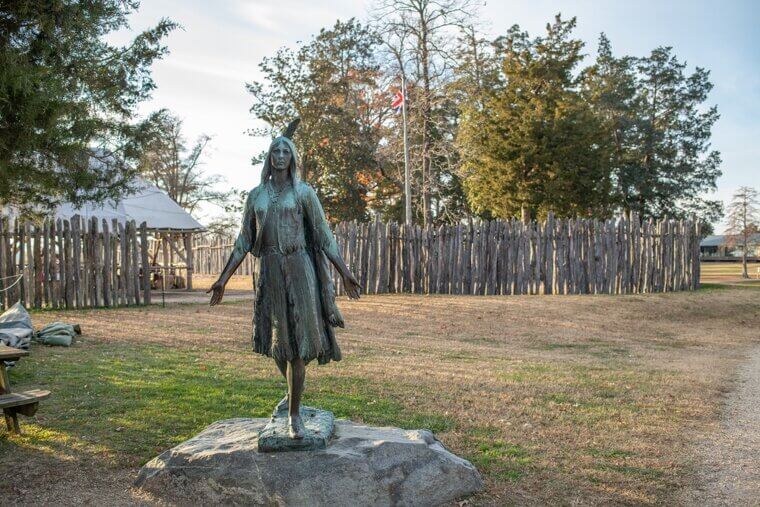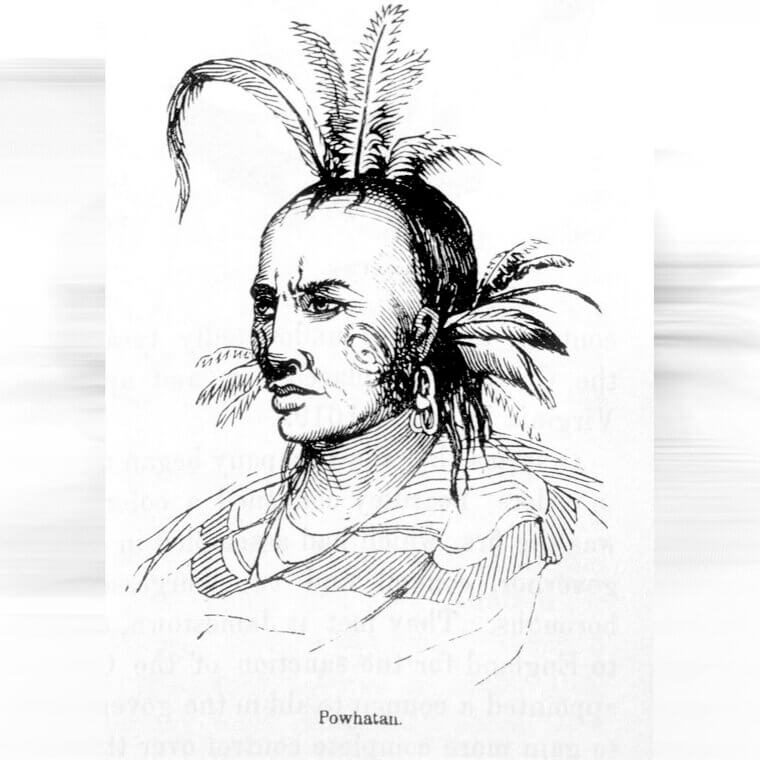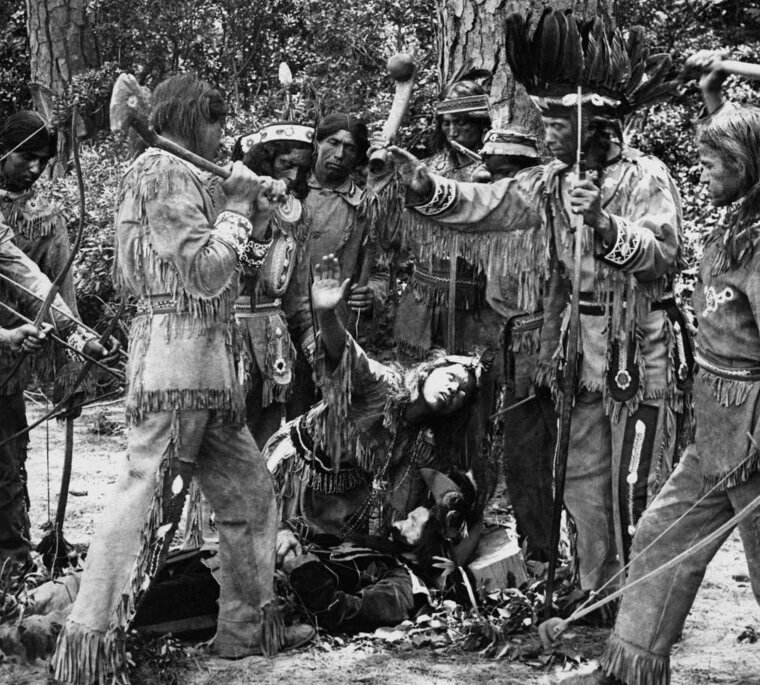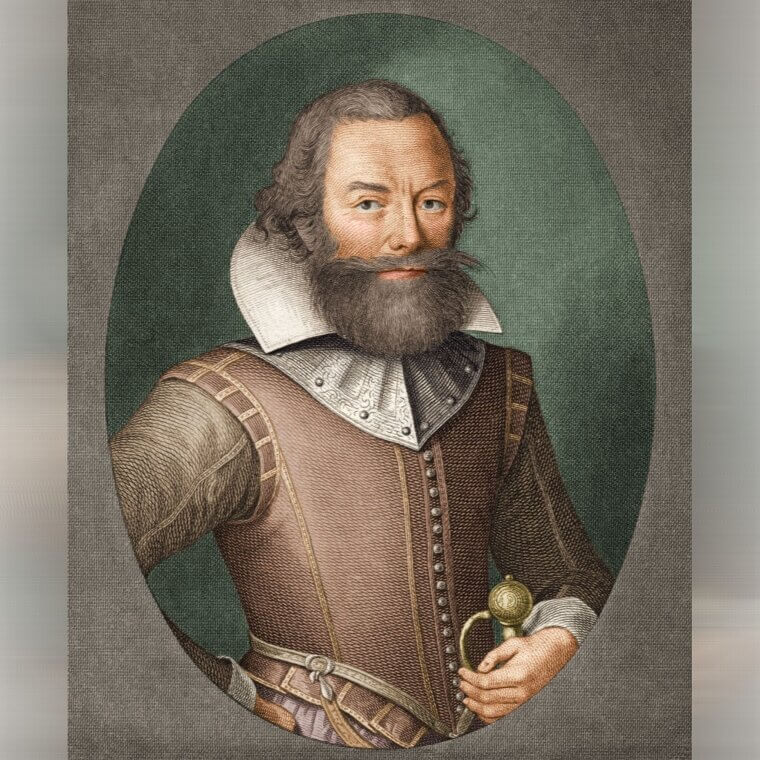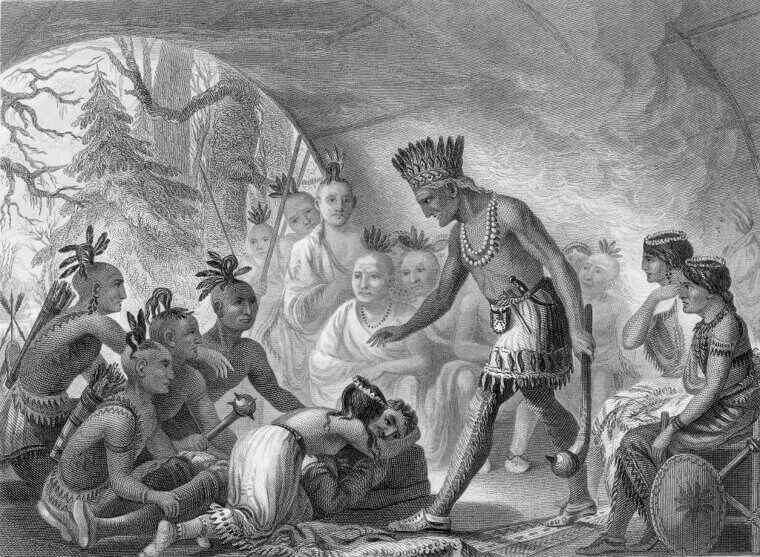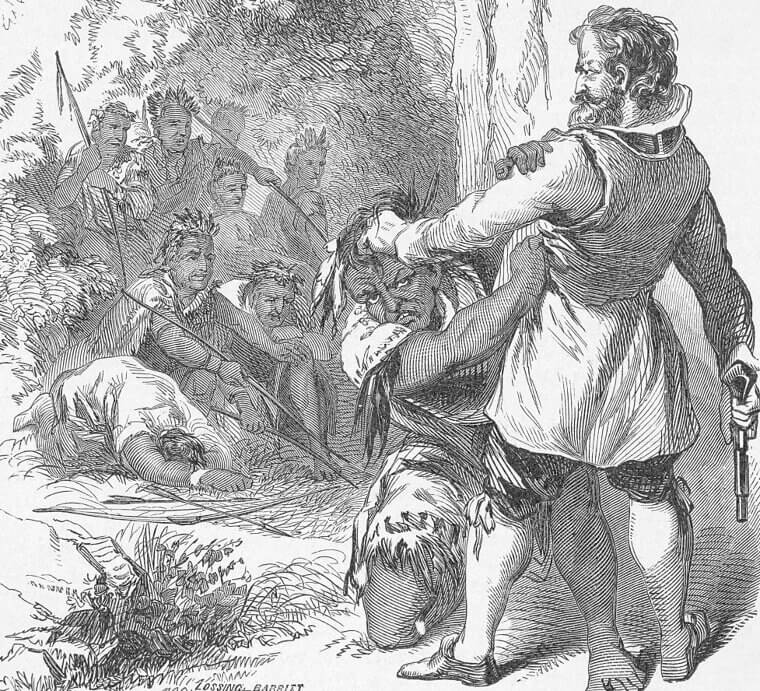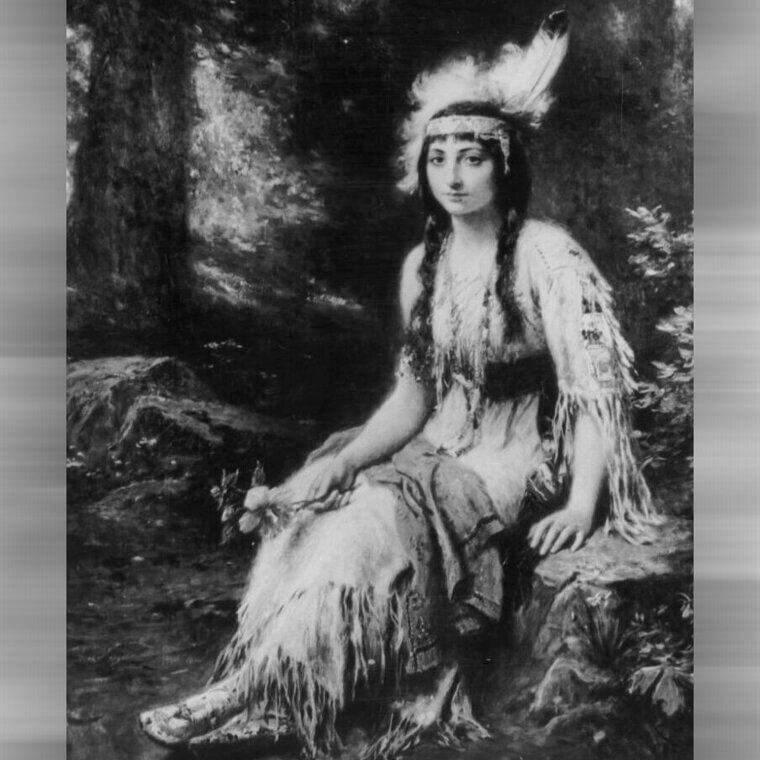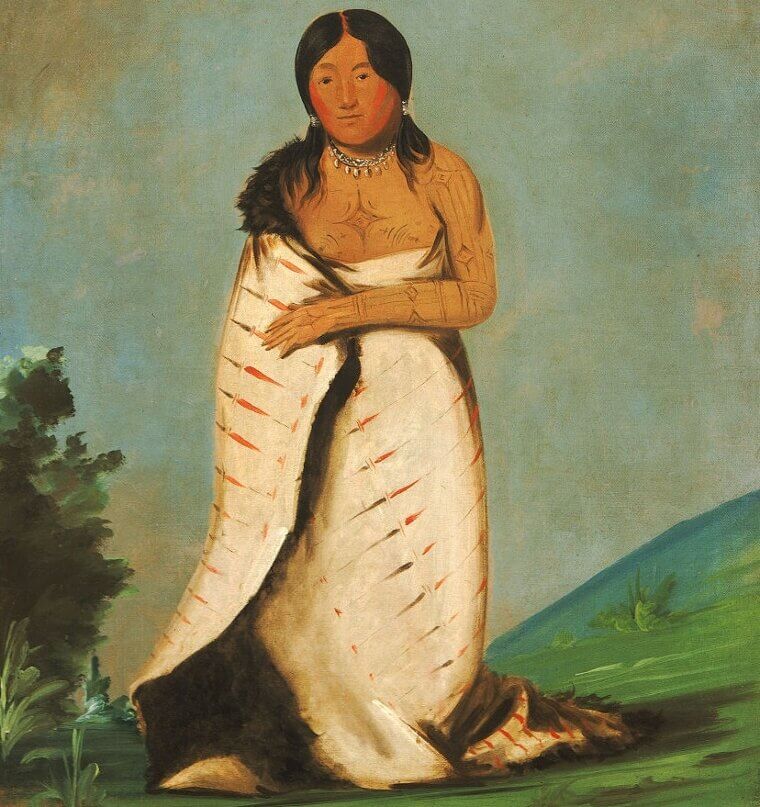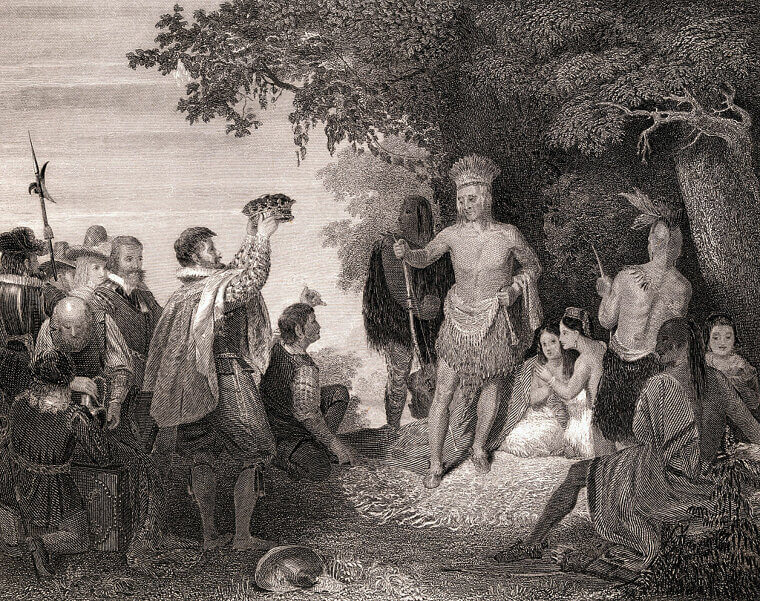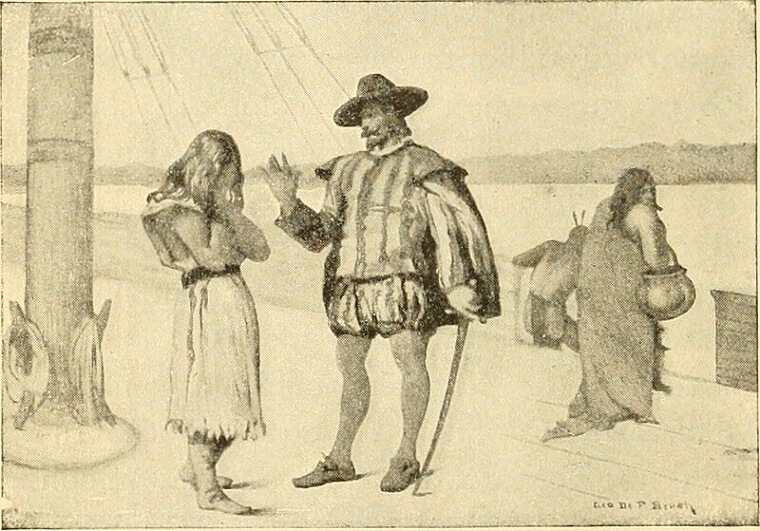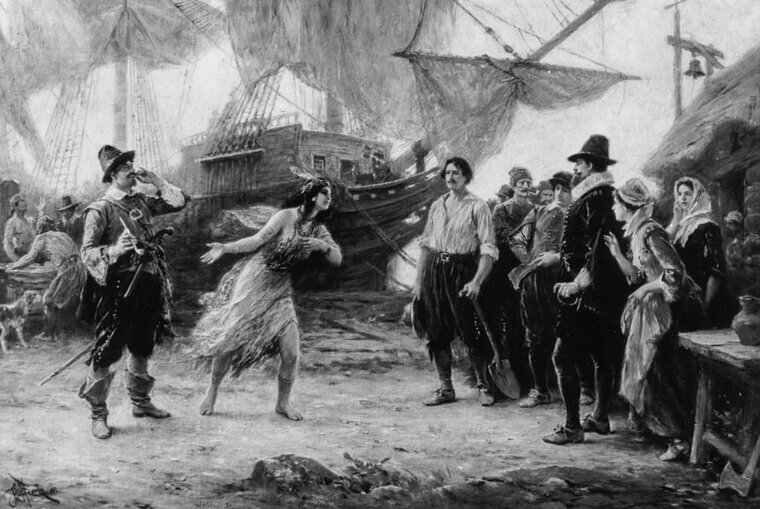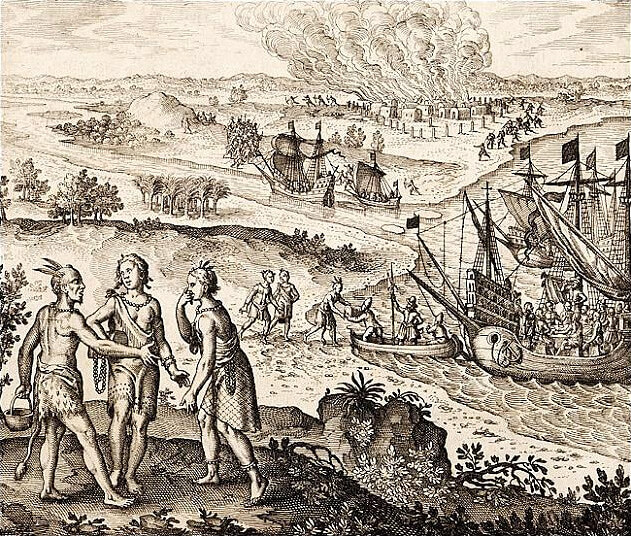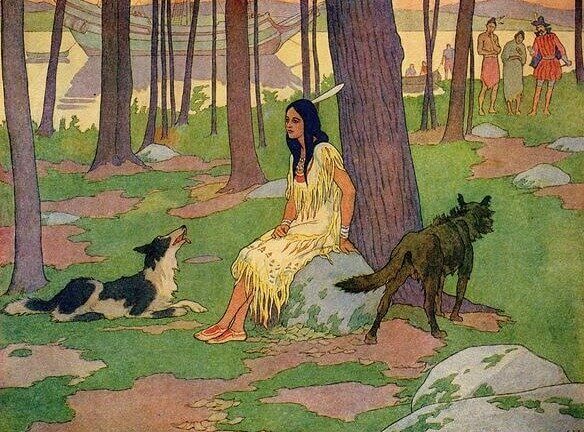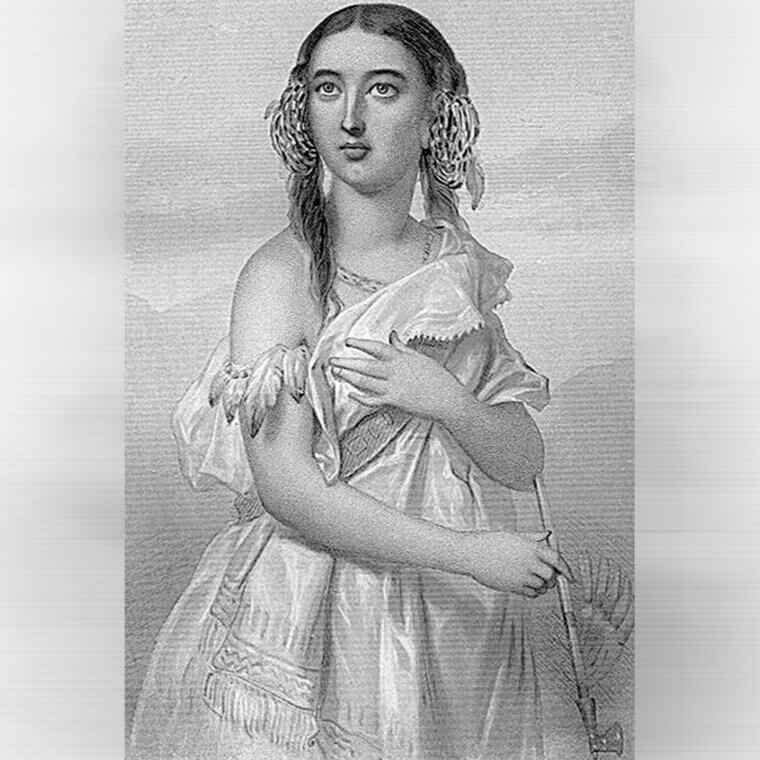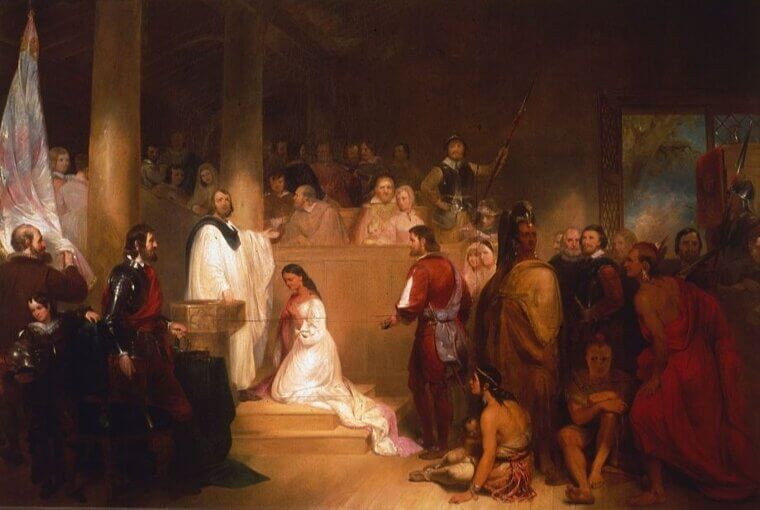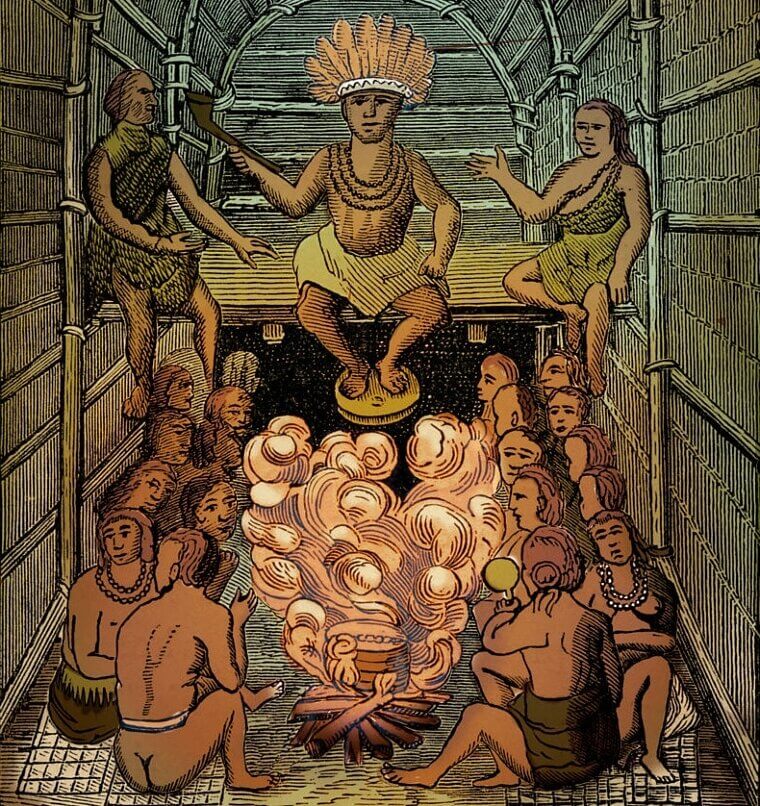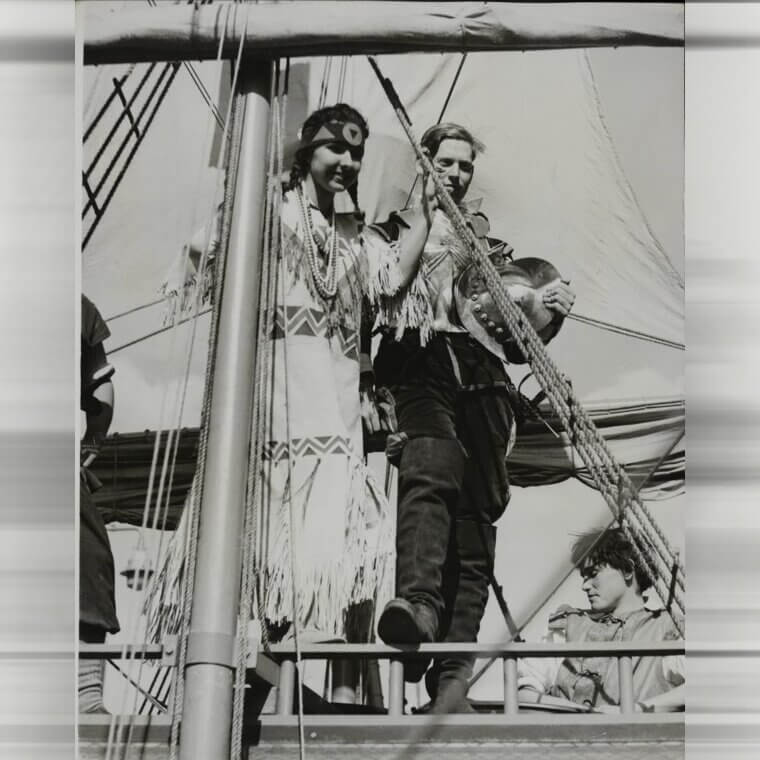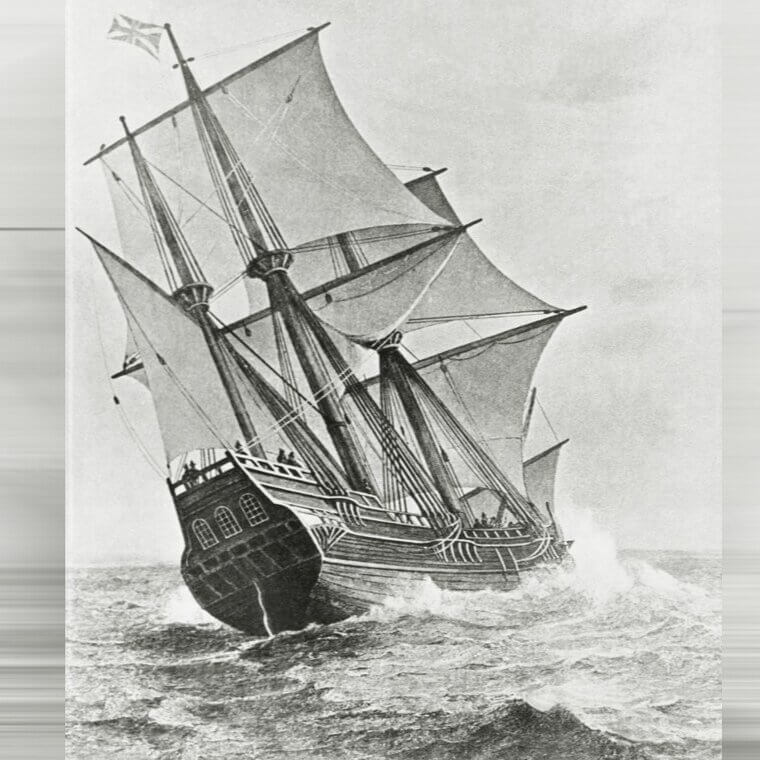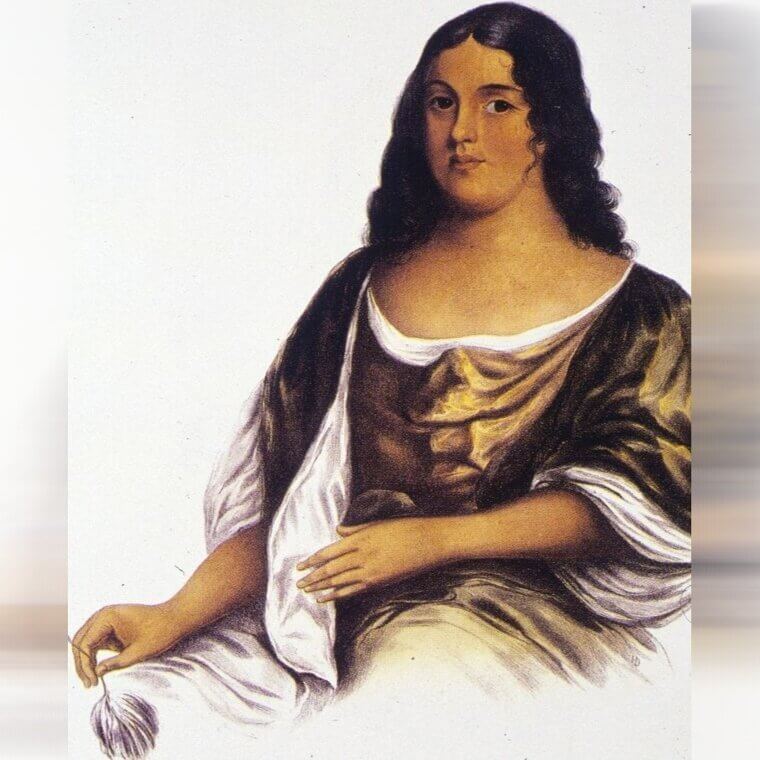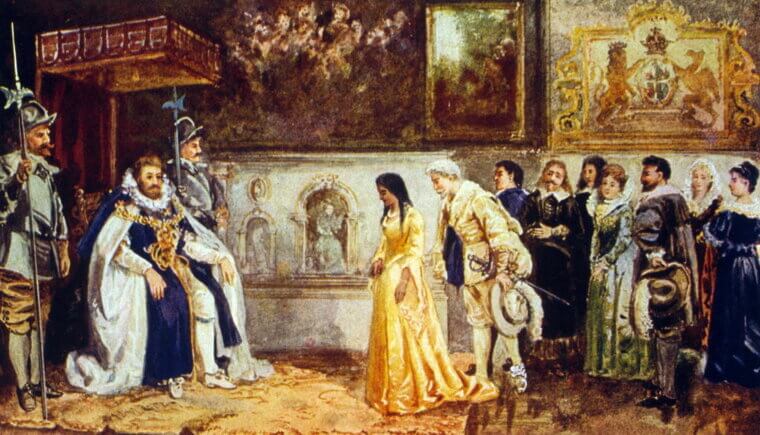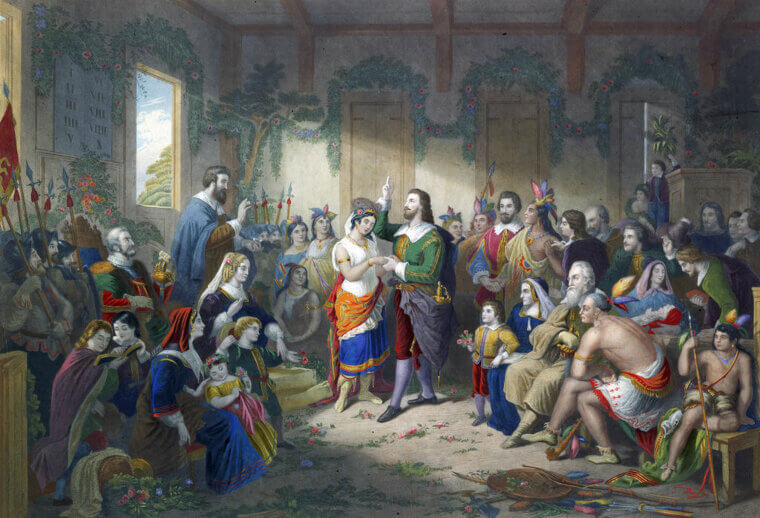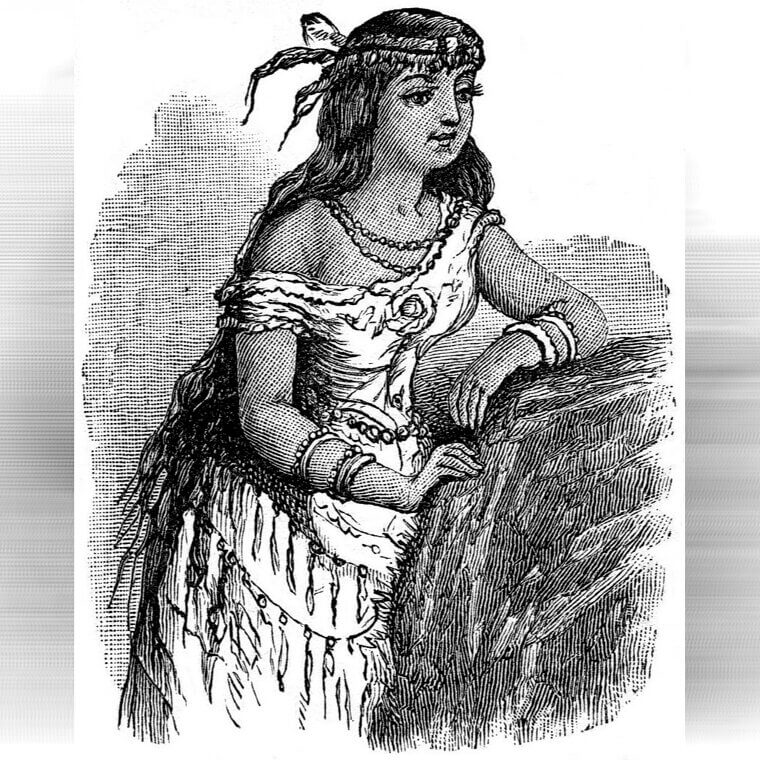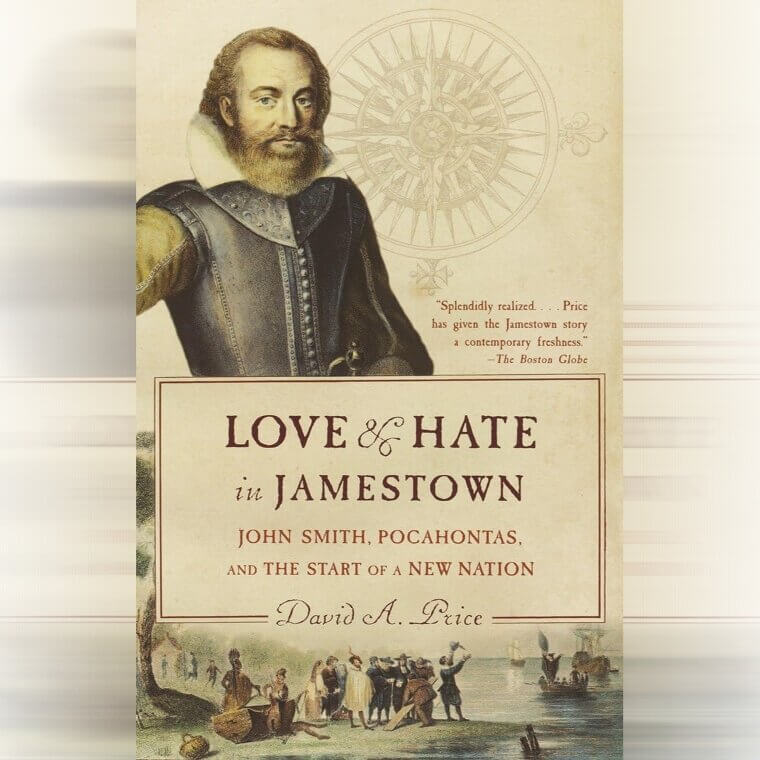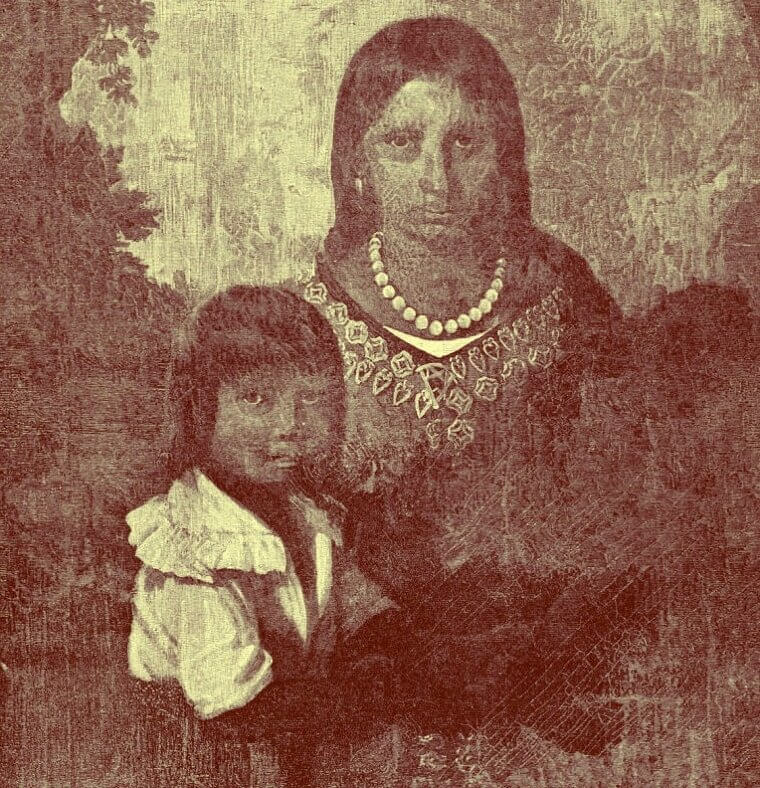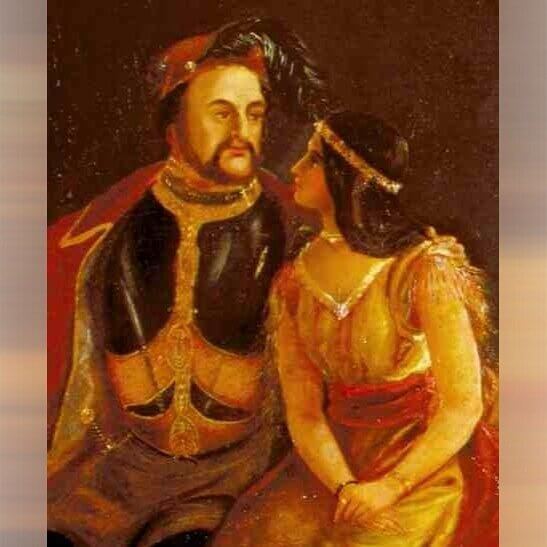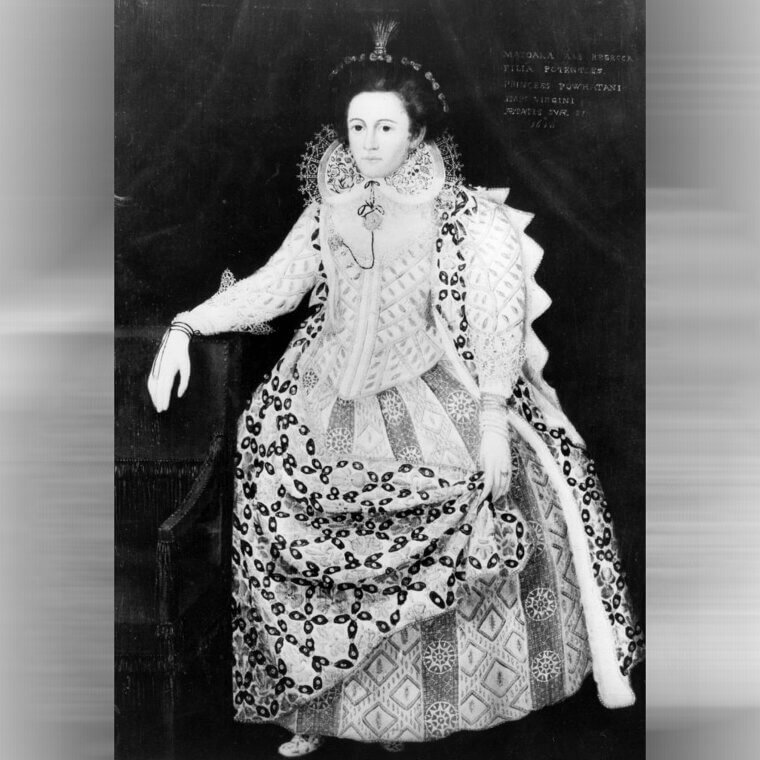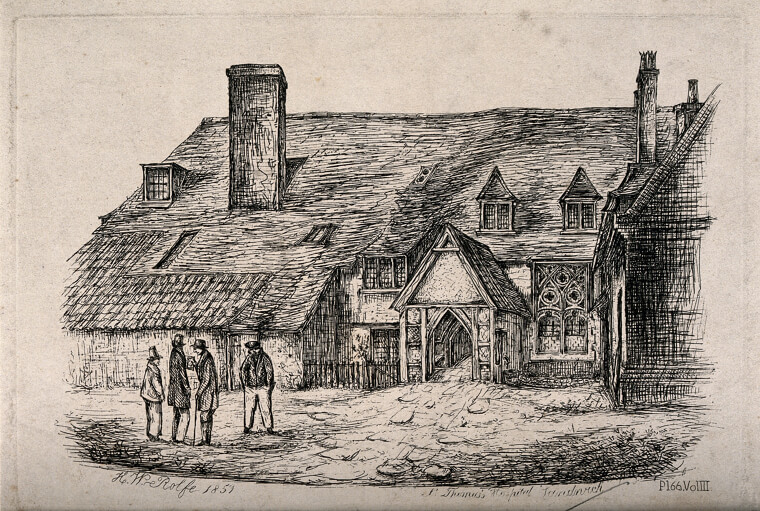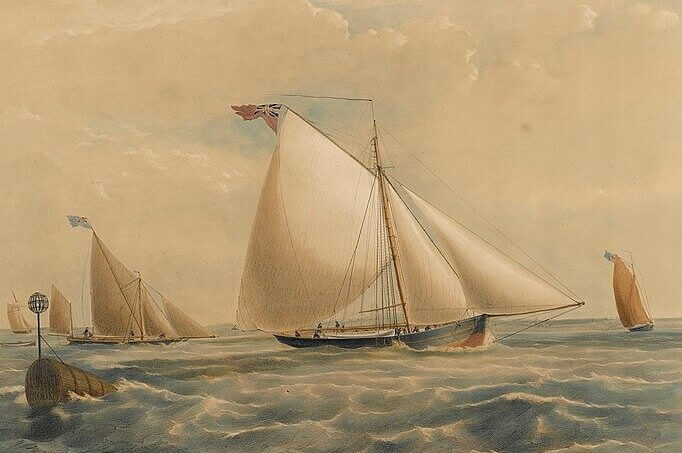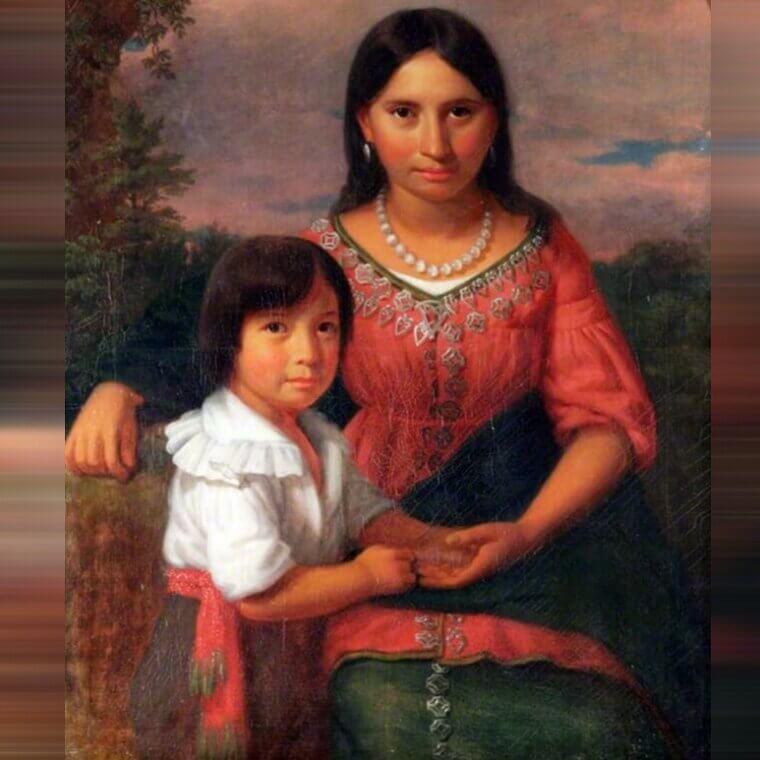Pocahontas Wasn't a Typical Disney Princess
Many of the leading ladies of old-school Disney movies were given the title of 'Princess', which was no different for Pocahontas. She easily fit into that princess category with her beautiful appearance, stunning singing voice, on-screen romances, and personal struggles. Of course, having a Native American princess at the forefront of a Disney movie was a new move for the Walt Disney Company - but it went down extremely well with fans across the world.
While certain parts of Pocahontas's on-screen Disney story are correct, and the young woman was somewhat of a princess as the daughter of a Powhatan chief, there are also many aspects of the movie that don't match up.
Pocahontas Wasn't Even Her Real Name
Perhaps the biggest discrepancy between the movie and the real-life story of Pocahontas is that this Native American legend wasn't even called Pocahontas. The woman we know to be called Pocahontas was born in 1596 as Amonute. But when the English settlers began to sail upon the shores of the Powhatan people, they decided to give themselves nicknames. That way, the English couldn't use their real names to harm them.
As a result, Amonute became Pocahontas, which loosely translates to 'the playful one.' This suited the young girl perfectly, as she often played with the boys in her village rather than the other girls.
As She Got Older, She Was Also Given a Secondary Nickname
Although Amonute was later given the Pocahontas nickname to protect themselves from the strangers on their shores, her parents also gave her another secondary nickname. This move was marked by Native American tradition, whereby parents give their children a nickname based on the personality traits that stand out as they age. And as Pocahontas was growing into a beautiful woman with a strong personality, she received the secondary nickname of Matoka.
However, as we all know, this wasn't the last name that Pocahontas added to her roster. When she moved to England, she was stripped of all of her Native American names and forced to use an English name instead.
Pocahontas Was a Big Deal in Her Village
On the day that she was born, Pocahontas became one of the most important people in her village. She was born into high status as the daughter of Wahunsenaca, the Chief Powhatan and paramount chief of Tsenacommacah. After all, her father was in charge of over 25,000 villages and even had around 30 lower-level chiefs working alongside him to keep the Powhatan people and their villages in check. He also took many wives over his lifetime.
And while very little is known about Pocahontas's mother, some historians believe that she was the chief's very first wife. Some even suggest that she died while giving birth to Pocahontas.
She Lived With Her Father and Multiple Half-Siblings Growing up
Although Powhatan chiefs traditionally had many wives, there were rules to follow regarding timing and children. While pregnant with Pocahontas, her mother returned to her own village to wait out the pregnancy and give birth. Then, they sent Pocahontas back to her father's village when they were happy that the newborn baby was strong enough. From then on, Pocahontas was bound by the tradition of living by her father's side.
As the chief went on to have more wives and children, Pocahontas grew up with multiple half-siblings. And while the exact number isn't known, it's believed that having siblings enhanced her caring nature - something that came back to bite her.
Apparently, Pocahontas Saved John Smith's Life
Much of the Disney movie we all know and love was based on John Smith's own account of events, but historians have urged us all to take these retellings with a pinch of salt. According to the English soldier and explorer, he first came across Pocahontas when he was captured by a Native American called Opechancanough. Proud of his capture, Opechancanough took John to every Powhatan village to show him off before taking him to the chief.
Apparently, the chief then decided that John Smith needed to be killed to prevent the English settlers from causing any destruction on their land. But then Pocahontas saved his life.
But John Smith Was Known for Over-Exaggerating
While we all know that John Smith did indeed survive his interaction with the Powhatan tribe, historians generally agree that the events of his capture and release weren't quite as poetic. In fact, John Smith was known for over-exaggerating his tales of new worlds and exploration, and it's generally believed that he embellished his stories to sell more of his books. On one occasion, he even claimed that he'd seen mermaids in the flesh.
As Pocahontas was only a small child of around 10 years old (or potentially younger) when John Smith was captured on Powhatan land, it's believed that his story didn't happen the way he suggested.
Their Relationship Wasn't as Magical as It Seemed
The books on which the Disney movie was largely based also feature a heartwarming love story between Pocahontas and John Smith. In them, John Smith is showcased as a warm, loving, and trustworthy man who was simply in with the wrong crowd. And in the end, he can't deny the connection he has with Pocahontas, who seems to be of a similar age to him. In reality, though, this wasn't the case.
When they first met, Pocahontas had yet to reach her teens, while John Smith was 27 years old. It's widely believed that this natural connection didn't exist between the two of them, either.
In Reality, John Smith Terrorised the Powhatan Villages
Although stories and movies would like us to believe that two people from very different lifestyles fell in love and lived happily ever after, the reality is that Pocahontas and John Smith didn't fall in love. Of course, their age difference played a part in this. But more than anything, it was John Smith's decision to terrorise the Powhatan villages that made him the villain in her haunting real-life story.
John would reportedly spend his evenings breaking into the villagers' houses and stealing their belongings, which didn't go down well with the tribe. Ultimately, though, the Powhatans needed his help to protect them from bigger threats.
Just Like in the Movie, Pocahontas Was Highly Skilled
In Pocahontas, we learn a lot about the young woman. We learn that she's highly connected to the world around her, she knows how to communicate with Mother Nature, she's confident enough to roam the wilderness by herself, and she's highly skilled in everyday tasks. And what we saw on the screen is likely to be what she was like in real life, as young Powhatan girls were taught it all from a young age.
Young girls were taught to do everything from building their own houses to cooking their own food and gathering water for the tribe. However, only the men were allowed to hunt or fight.
She Was Probably Covered in Tattoos, Too
Most historians also agree that the 1995 movie also got certain aspects of her appearance correct. In the movie, Pocahontas had dark flowing hair and a Native American tattoo wrapping around her upper arm. As it was commonplace for Powhatan people of all ages to have traditional tattoos all over their bodies, it's believed that she may have even had more ink than the movie suggested - especially as she was the daughter of the chief.
In the Powhatan tribe, those of higher rank always had more tattoos than those lower down. And as her father was the highest you could get, this automatically made her one of the highest-ranking villagers, too.
Pocahontas First Got Married When She Was 14
In the Disney movie, Pocahontas is a single woman dealing with the pressures of impending marriage, and it's clear that her father wants her to marry a man called Kocoum. The movie didn't tell the whole story, though. In real life, Pocahontas was bound by Powhatan tradition, which meant that she had a coming-of-age ceremony when she was 14 years old and was quickly married off to a man of similar standing.
That man was Kocoum, and it's not known how old he was when they tied the knot. However, we do know that Pocahontas was just 14 when she became a wife for the first time.
Pocahontas and Kocoum Also Had a Baby
In the chief's eyes, Kocoum was the perfect husband for his daughter. He was the brother of a neighboring village chief and was a strong and powerful man who would keep the impressive bloodline going. And when they got married, Pocahontas and Kocoum moved to a village near Jamestown to set up their life together. It was here that they welcomed a child into the world, and it's believed that the couple were in love.
It's believed that Pocahontas married for love because, as per tradition, she should have married a chief. But in the movie, she didn't like Kocoum and didn't want to marry him at all.
Tensions Grew in the Summertime as the English Preyed on the Native Women
Although Pocahontas and Kocoum tried to enjoy their lives together, it became harder and harder to ignore the presence of the nearby English settlers. They had originally agreed to live in harmony as the English were to protect the Powhatans from the Spanish, but this soon became more and more difficult. Tensions began to rise as the English started to take advantage of the villagers - especially when it came to their women.
The cultural divide between the two groups reached a fever point during the summer months when the woman would take off their clothes to cool down as they always did. To the English, though, this was a new experience.
Before Too Long, Pocahontas Was Caught in the Middle
When the English took advantage of the women in the village during these months, this served as a turning point for the two groups. Although the Powhatans had been willing to overlook some of their misdemeanors, this was a step too far - and the English could sense a change in the villagers. They could sense danger, and they decided to devise a plan that would see them come out on top in a fight.
Captain Samuel Argall decided that kidnapping the chief's daughter would be the best plan of action, and before too long, Pocahontas was caught in the middle of it all. She was captured just weeks after having her baby.
She Was Used as a Bargaining Chip and Held for Ransom
The English settlers knew that they'd chosen the right hostage when the villagers and the chief realized that they had Pocahontas. They wanted to use her as a bargaining chip and ensure that the Pawhatons didn't attempt to overpower them and made it clear that they would kill the chief's daughter if they came close to them. Although she was weak and feared for her life, Pocahontas knew that she had to comply with her captors.
Just before she was taken away and kept in the bow of an English ship, she managed to pass her newborn child to her fellow villagers and asked them to keep her baby safe.
Kocuom Tried to Rescue Her but Was Killed
The Powhatan people didn't know what to do. Although they wanted to save Pocahontas, they knew that the English would stick to their word and kill her if they attempted to rescue her. So, they hoped that steering clear would allow the dust to settle, the English would see sense, and they'd let her go. But as time wore on and Pocahontas remained in their possession, the English showed no signs of letting up.
Enough had been enough for Kocuom, and he decided to try and rescue his wife on his own. Unfortunately, the English didn't take kindly to this intrusion and killed him in front of Pocahontas's eyes.
Pocahontas Refused to Eat or Talk to Her Captors
After killing Kocoum, the English knew they needed to keep Pocahontas alive and well to keep her as a bargaining chip. But Pocahontas wasn't playing ball. She hated the men for what they had done to her husband, and she was missing her child as she spent month after month in the bow of the ship. In the end, she knew that she needed to play them at their own game. So, she stopped eating and refused to speak to them.
However, the English needed her alive and couldn't let her die. Because of this, they invited Pocahontas's half-sister onto the ship, hoping she would convince her to start eating again.
Pocahontas Suffered Immensely While Held Captive
When her sister visited Pocahontas, it was clear to see just how much she had suffered at the hands of the English settlers. She was a shell of the young woman she had once been, and she had been both mentally and physically abused. In fact, the settlers had convinced Pocahontas that her father and her extended family had given her up to them as they no longer loved her.
Her sister quickly assured the young woman that it wasn't true and eventually got her to eat - but the English didn't let her go. They continued to hold her captive, and she fell pregnant once again.
The Settlers Wanted to Send Her to England and Change Her Name
After a year or so in captivity on the ship, the settlers agreed that she should be sent to England to start a new life. They wanted her to leave her Native American roots behind her and embrace what England had to offer. Befoe that, however, she not only had to change religion, but she also had to change her name. This was done during a religious ceremony, where the minister confirmed that she should be called Rebecca.
With a new name and a journey to a new country on the horizon, the settlers thought that Pocahontas - or Rebecca - would finally give in to their ways and live like an English person. But real life isn't like the movies.
Her Father Tried a Last-Ditch Attempt to Save Her
Just before Pocahontas was due to sail for her new life in England, her father tried to rescue her. He had caught wind of what her captors wanted to do, and he wasn't going to let her be taken to a new country and leave her family behind. So, he planned a battle between the Native Americans and the English settlers and hoped his soldiers would succeed.
After many of his soldiers died in battle, the settlers allowed her father to speak to Pocahontas - but this conversation didn't go as planned. Apparently, Pocahontas didn't want to go back home. She told him that she wanted to go to England.
Historians Believe She Sacrificed Herself for Her Family
After being held captive and being forced to change everything about her, many people - including her father - wondered why she would want to stay with her captors. However, historians believe that this conversation with her father was a way for her to protect him. By sacrificing herself and going to England with the settlers, she hoped that they would stop terrorising her family and her fellow Native Americans.
Other theories state that she was suffering from Stockholm Syndrome and come to believe that her captors were really working in her best interest. Either way, it wasn't long before she left her home and set sail across the pond.
Sending Her to England Appeased Both Groups
Although those close to Pocahontas were outraged to see her go, others believed that it was the right thing to do. The English settlers used Pocahontas to set an example and prove themselves to be the higher power - and this helped them to solidify their place in America while also creating trade agreements with the Native Americans. In their eyes, Pocahontas was proof that they had an impressive relationship with the Native Americans.
From a Native American point of view, taking Pocahontas had allowed them the space they needed to continue their lives as normal - with only slight interruptions from the settlers nearby.
Pocahontas Went Through a Transformation in England
For Pocahontas, life in England couldn't have been more different to what she was used to. And while she had previously been a captive in her own country and on her own land, England allowed her a little more freedom. Her English captors didn't want her to be a hostage in their home country, so they did everything they could to integrate her into society and transform her into a proper English lady.
One of their first tasks was to teach her English. Until then, Pocahontas knew very little English and struggled to communicate with anyone. However, she picked it up quickly.
She Impressed the High Society in England
Of course, her presence in England didn't go unnoticed. Those in high society in England had never met a Native American person before, and they had assumed that she would be savage-like in terms of her appearance and demeanor - as per the damaging stereotype. But when they set eyes on Pocahontas, they saw a beautiful young woman who was diligently learning the English ways and customs and fitting in nicely.
Those around her also made sure that she looked the part and wore clothes befitting her new life in England. She was so well received that she was often used as the go-between for the English and Native Americans.
Pocahontas Then Married Her Second Husband, John Rolfe
There was one issue with Pocahontas, though. As she had fallen pregnant while being held captive, the English knew that it wouldn't be long until she'd give birth - and she needed a husband if she wanted to remain a proper member of high society. So, she married John Rolfe. He not only accepted Pocahontas as his wife, but he also claimed their son Thomas Rolfe as his own - even though the biological father was unknown.
News of Pocahontas and John Rolfe's nuptials soon made their way across the pond, and while it's not known how her father really felt about the marriage, he still sent her a pearl necklace as a congratulatory gift.
Many Treated Her as a Princess in England
Being held captive and sent halfway across the world was probably not what Pocahontas wanted to do with her life, but historians state that she led a comfortable life in England. In fact, many treated her as a princess in England, and her social standing as the daughter of a chief remained intact despite her not being in her home country. What's more, the English wanted to know more and more about her homeland.
Pocahontas was regularly asked about Jamestown, the English settlers who lived there, and her family, who lived in their own villages. As a result, she was often invited to high society events.
John Smith's Books Also Made Them Fall in Love With Her
As Pocahontas kept a busy social calendar and integrated herself into high society, John Smith also mused about his time across the pond. He took the opportunity to release books and articles about his experience with the Native Americans and Pocahontas herself - and they were an instant hit. People wanted to know more and more about the world outside of England and the Native Americans who lived in the far away land.
This made people fall more and more in love with Pocahontas, and she was seen as the poster girl for the seemingly impressive relations between the English and the Native Americans.
Eventually, She Was Allowed to Go Back Home
After five years in England, Pocahontas could see she had made a difference. She had connected the English and the Native Americans together, and she knew that both parties could live peacefully because of it. However, she had spent five long years away from her home country, her people, her family, and her child - and she wanted to go back home. So, she begged John Rolfe to let her travel back to America.
It took a fair bit of coaxing, but John eventually decided to allow his wife to travel back to Virginia. However, he wouldn't let her travel alone, so he agreed to go with her.
Sadly, She Didn't Survive the Crossing Back Home
With her bags packed and her husband by her side, Pocahontas was finally on her way back to her home after five years of living a completely different life. She was excited and nervous at the same time, but she knew that the journey wouldn't be easy. It would be a long crossing from England to America, and she also had to sail with Captain Samuel Argall back at the helm.
Sadly, Pocahontas didn't make it across the pond. One evening, while eating dinner with her husband and the captain, she passed away. She was just 21 years old at the time.
Many Thought That Her Death Was Suspicious
It didn't take long for the news of Pocahontas' death to make its way back to her family in America. They had been nervously waiting for her return, excited to see their beloved daughter, mother, and sister after so many years. And when both the captain of the ship and John Rolfe claimed that she'd died from tuberculosis, they weren't convinced. The last time they had heard from her, she had been alive and well.
Because of this, many people thought that her death was suspicious. They began to question whether foul play had been involved, and even suggested that she had been poisoned by her husband.
Her Body Was Taken Back to England Rather Than America
To make matters even worse, her family soon learned that Pocahontas wouldn't making a return to her homeland at all - even in death. Instead, John Rolfe and the captain decided to turn back and head back to England where they would lay her body to rest. In their eyes, Pocahontas had become a fully-fledged Englishwoman and deserved an English send-off. Naturally, her family across the pond didn't agree with that sentiment.
Although her family asked to travel to England to say their goodbyes to her body, they were denied their request on multiple occasions. As a result, her father died shortly after from a broken heart.
After His Mother Died, John Rolfe Abandoned Their Son
The death of Pocahontas was a shock to all those who knew her - and even those who weren't. And while her death inspired stories and movies, it was a life-changing event for Thomas Rolfe. His mother had passed away, and he had assumed that he'd be able to rely on his father to look after him. But as John Rolfe didn't know for sure that he was his father, he decided to abandon him.
John decided to dump the young boy, who was just five years old at the time, on his brother. With Thomas out of the way, he traveled back to America to continue his career.
Sadly, Thomas Was Never Allowed to Leave England
Thomas Rolfe was eager to know more when he grew up and learned of his mother's legacy. He constantly felt as though there was a missing part of him, especially as his father wanted nothing to do with him. And while Thomas wanted nothing more than to leave England and seek out the other side of his family in America, the prospect of this scared the high society Englishmen around him.
They didn't want Thomas to hear the other side of the story, so they refused every single one of his requests to visit his mother's homeland. In fact, he never left England.
Thomas's Whole Life Was Overshadowed and Controlled
Sadly, Thomas Rolfe never felt like he truly belonged. He was never welcomed into English society and felt as though he was walking on eggshells with each move he made. He was also never accepted by the man he thought was his father. Plus, he never got the chance to learn more about his heritage and the other side of his family. As if that wasn't enough, he was also overshadowed by his mother's story.
Although Thomas held great affection for his mother, he was always known as the 'son of Pocahontas.' In fact, that's precisely what was written on his gravestone when he passed away.

